How to Make Taste Safe Homemade Puff Paint
Disclosure: This blog contains affiliate links which I may earn a small commission from if you purchase through them, at no extra cost to you.
Painting is always a welcomed activity. This quick and easy homemade puff paint recipe can take your arts and crafts to a whole new level with a dash of science- literally!
Using ingredients in the kitchen, you can have your very own homemade puff paint made and ready to play in minutes. Puff paint that will add another dimension to your crafts and art projects!
Taste Safe Homemade Puff Paint
Disclosure: This blog does contain affiliate links which I may earn a small commission from if you purchase through them, at no extra cost to you
Miss 4 had an interest in baking today however having spent the day in the kitchen yesterday, there is just not enough room in our freezer for another batch of anything!
Check out our favourite healthy hidden veg lunchbox recipes here!
Quickly my mind was running over sensory play activities that I could claim to be ‘baking’ that would satisfy her craving without wasting to many ingredients. With this as a focus and spotting one of her paintings from yesterday laying on the bench, the idea came to me – Microwaveable puff paint!
I had heard of microwavable puff paint through the grapevine, the concept seemed simple enough and so we gave it a shot!
It only took a couple of minutes for Miss 4 to mix a few pantry ingredients together to make our paint.
How to make homemade puffy paint without shaving cream or glue
This sensory play recipe is so easy and there are no fancy ingredients or steps. The recipe is forgiving and easy to fix if too much of that end up in the bowl or not enough of this.
With some kitchen staples as the ingredients, this recipe is great for younger children who are still mouthing. Also for older kids who just like to get messy too.
What you need to make taste safe homemade puff paint
This recipe will show you how to make puff paint with flour and water. Making your puffy paint with flour instead of shaving cream and glue will make it taste safe. In saying that, please remember to bake your flour to make it really taste safe. Learn about the harmful bacteria that is present in raw flour and how to make your flour taste safe here.
This recipe is great for getting the kids involved and can easily become a regular go to for those afternoons when messy play is called upon to save the day.
- 1 cup Plain Flour
- 1 teaspoon of Baking Powder
- Food colouring
- Water

Not taste safe or paint but still a bit of fun with science
That all being said in regards to the bacteria, baking your flour, this and that to make your paint taste safe. You could skip this step and have some fun with science.
Why would you, might your ask.
Well, what if I said that this paint could be used as an experiment demonstrating the presence of bacteria in flour.
Did that catch your attention? Better yet, would it capture your child’s attention?
While it is common knowledge that yeast makes bread rise, makes it light, fluffy and fabulous. There is another way. You have probably eaten the aftermath and not even known it.
Sourdough is a bread that is made without yeast. Yup, no yeast but still full of glorious holes. Sour dough is made with a slow fermentation process that uses a bacteria culture created with flour and water.
Long story short, flour and water ferments and will GROW!
If you can be assured your children will enjoy using the flour and water puff paint without being tempted to eat it, I am going to make the assumption they are probably old enough to appreciate watching their paint grow in a jar!
Yes, mark the starting spot with a sharpie or an elastic band. Then just leave it be. The wonders that are the bacterias in the flour will do their thing and soon enough, the mix will rise!
How to make homemade puff paint with flour and water
We decided to make two colours, so we set up two bowls.
I write this after having finished this activity. In hindsight, I would have made one batch of the uncoloured paint, divided it between the bowls and coloured it separately. These portions are generous!
To begin mixing our Puff Paint, Miss 4 measured out the flour and baking powder into each bowl.
It was then time to add the colouring and we were not expecting the reaction that we got!


The food colouring reacted with the baking powder which created a hiss of bubbles as it seeped across the top of the dry ingredients. It certainly added some exciting theatre to the play!
What is baking powder used for?
Baking powder is generally used to increase the volume and fluffiness of baked goods such as muffins and cakes. It does this by creating carbon dioxide via an acid base reaction. Chemistry meets cake is always something to get excited about!
The baking powder is what gives our puff paint its puff!

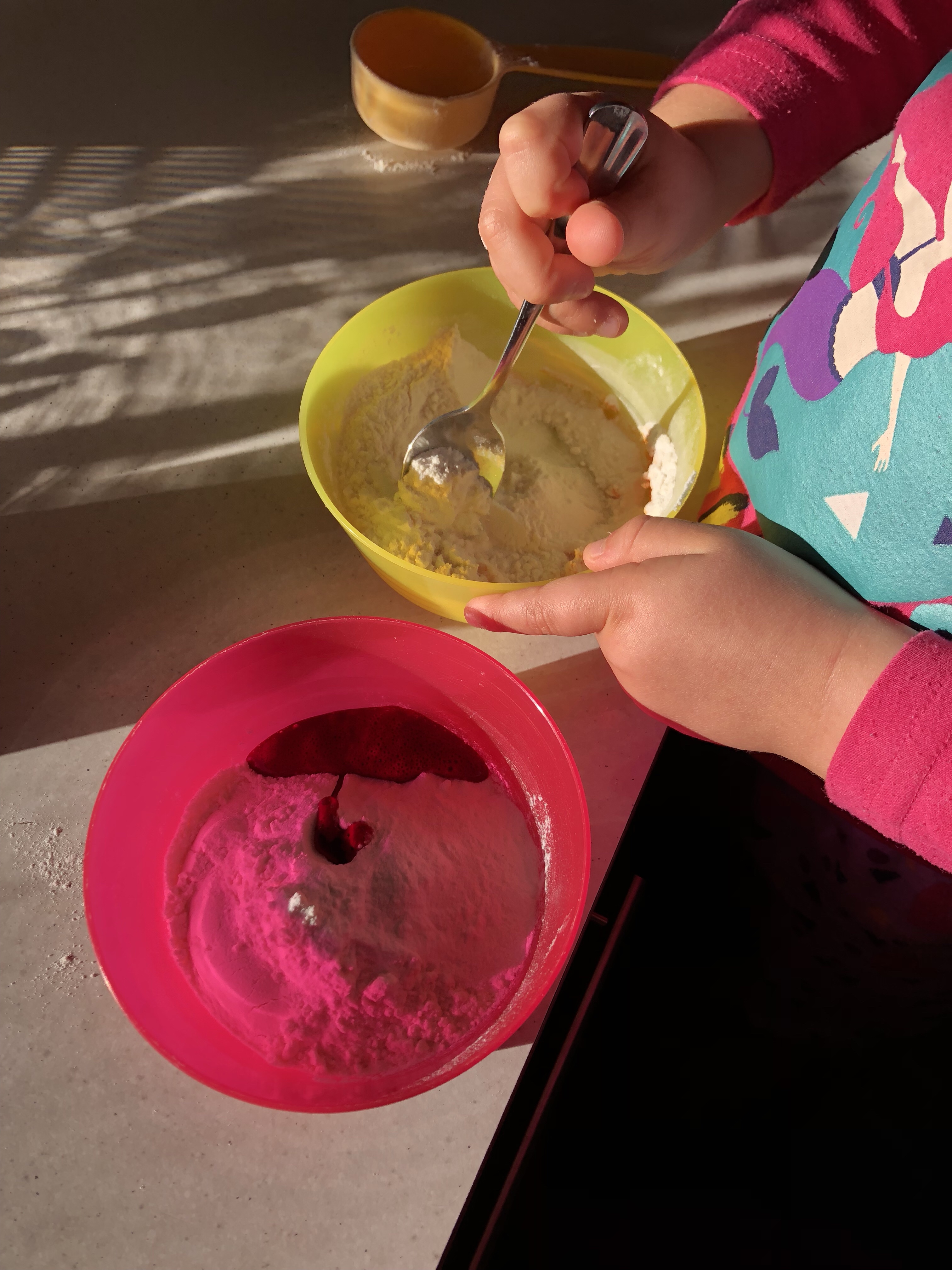
Observations and questions
After watching the sizzle fizzle out we poured a splash of water into the dry mix. Instantly this seemed to reignite the reaction again and we were again entertained with hisses and bubbles.
Miss 4 and I were chatting about different chemical reactions and how we were lucky that this was a safe one. She was brimming with questions, like I imagine most 4 years olds are.
Q: “Why did it happen?”
A: “Chemistry is creating a gas!”
Q: “How did it happen?”
A: “The acidic and alkaline powders are reacting with the liquid”
Q: “Why isn’t it dangerous?”
A: “The ingredients are non toxic and we are only using a tiny amount”
Q: “What is dangerous to mix together?”
A: “Lots of substances can be harmful if mixed. Thats why we make informed decisions about our play so we can stay safe.”
Q: “Can I eat it?” (This kid is ruled by her stomach in every way…)
A: “Well you can, that might not mean that you should though. How about an apple?”
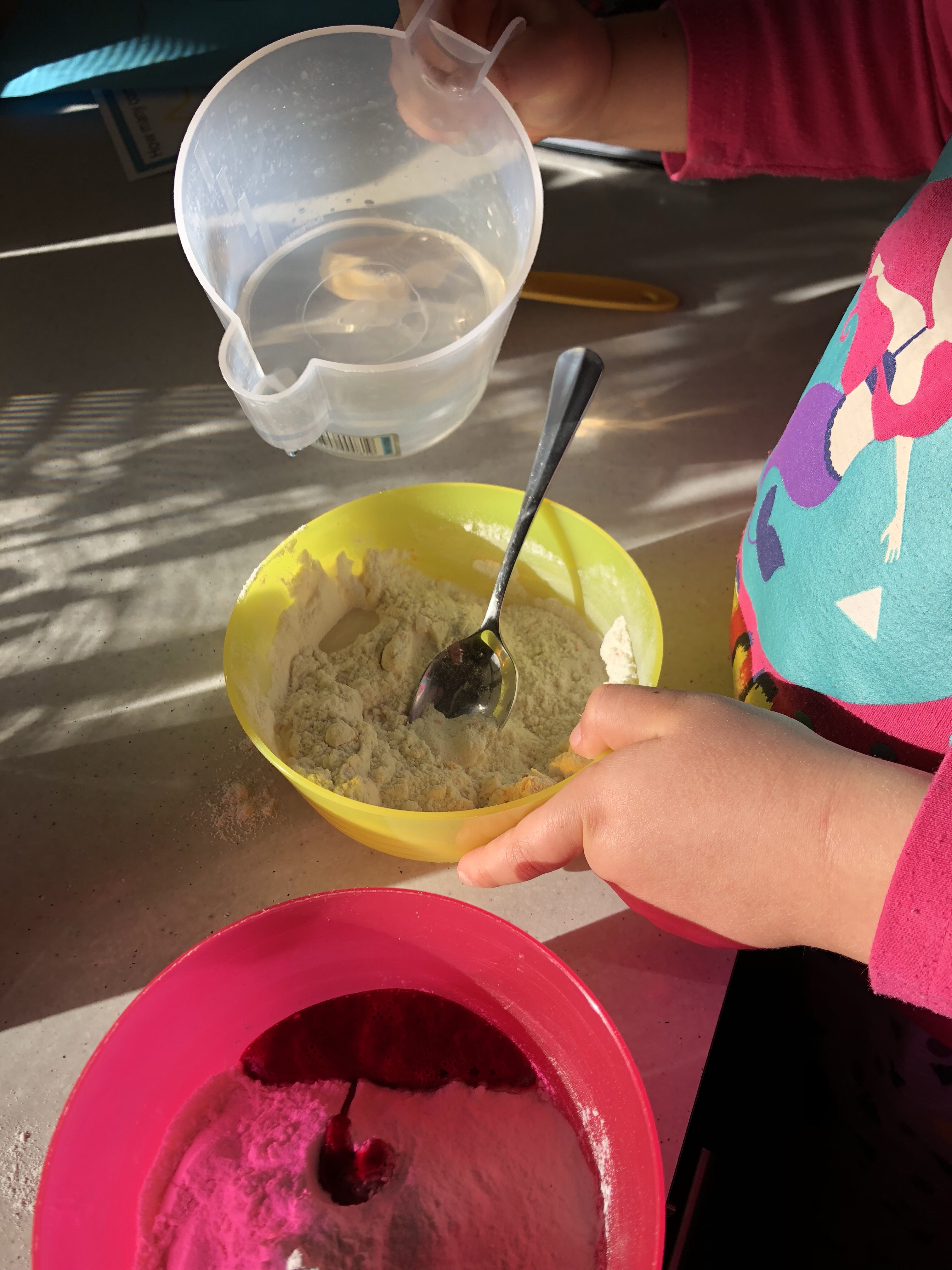

Mixing our puff paint
Once Miss 4 was satisfied with the answers I gave her, we continued stirring in splashed of water until the mix was smooth. We kept it relatively thick so it fell from the spoon in blobs rather than free flowing.
I placed the bowls on Miss 4s left hand side. Being that she is right handed, for her to put the paint on her brush she needed to navigate her right hand across be centre of her body to the left side.
This is actually a skill that needs to be practised. Miss 4 does struggle to do this. She will often twist and move her entire body to avoid crossing her midline.
This was a great opportunity for me to encourage her to refine this important skill and she was blissfully unaware!

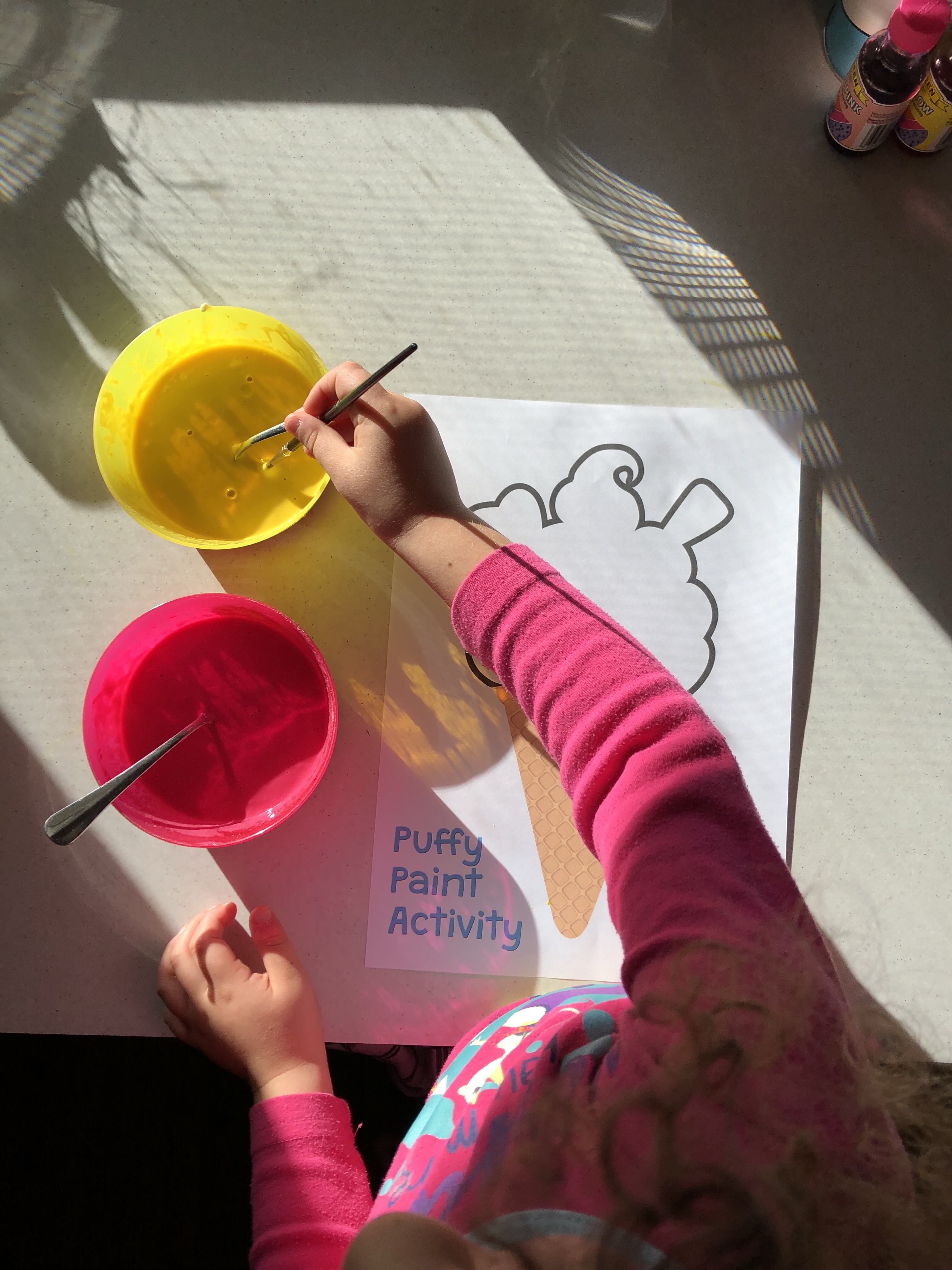
This puff paint need to be applied quite heavily. By doing this, the reaction will be much more obvious and have a greater impact once finished.
Miss 4 enjoyed laying the colours, blending, mixing, scooping and splatting.
She took some time to figure out the knack for spreading the mixture across her colouring page however, this did not slow her down.
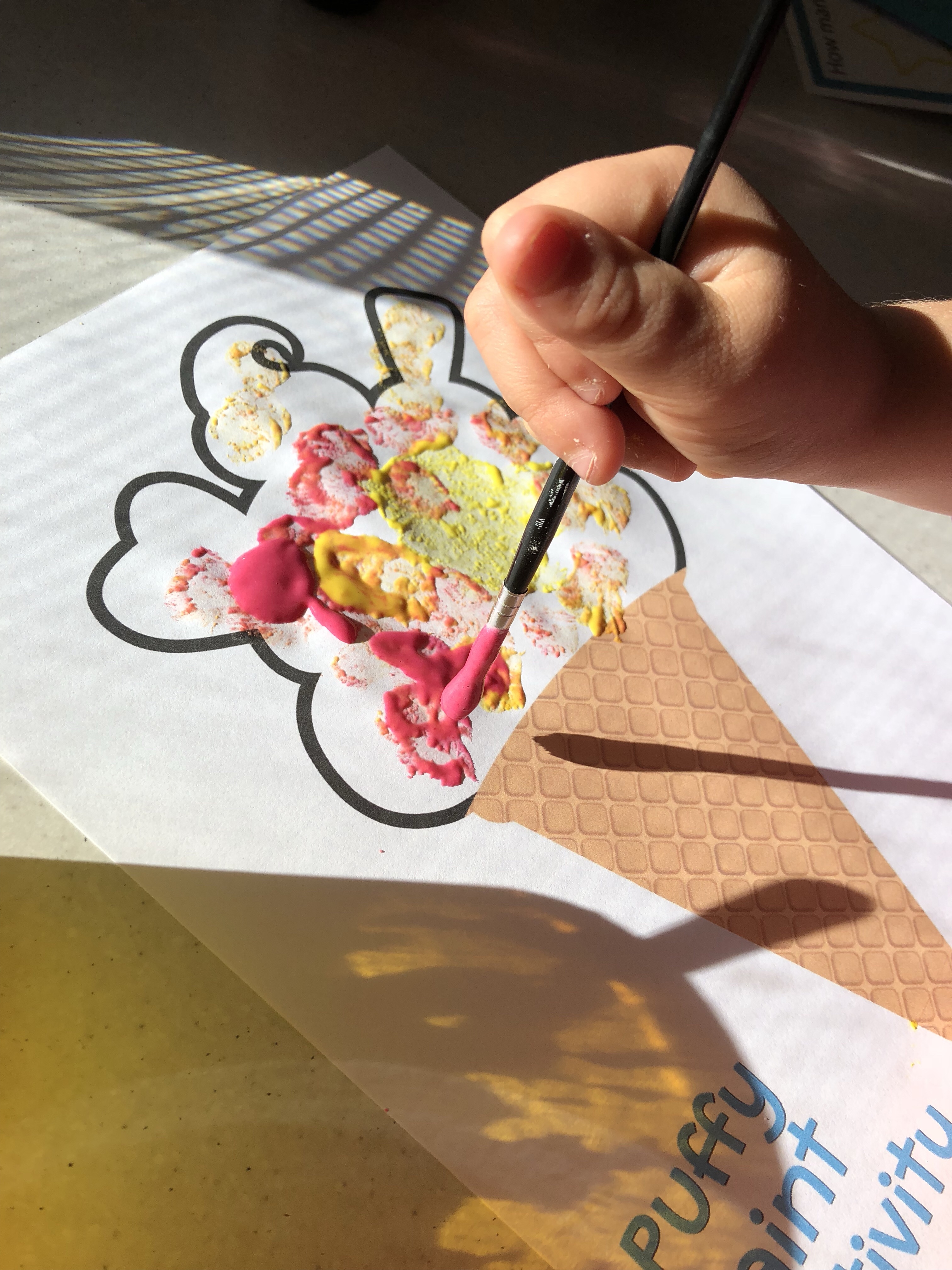

Once she was satisfied with her masterpiece, I suggested we put it into the microwave just to see what may happen.
Miss 4 was puzzled- instantly a look of wonder and curiosity spread over her face.
I didn’t have to ask twice though! She eagerly placed it into the microwave and set twenty seconds on the clock.
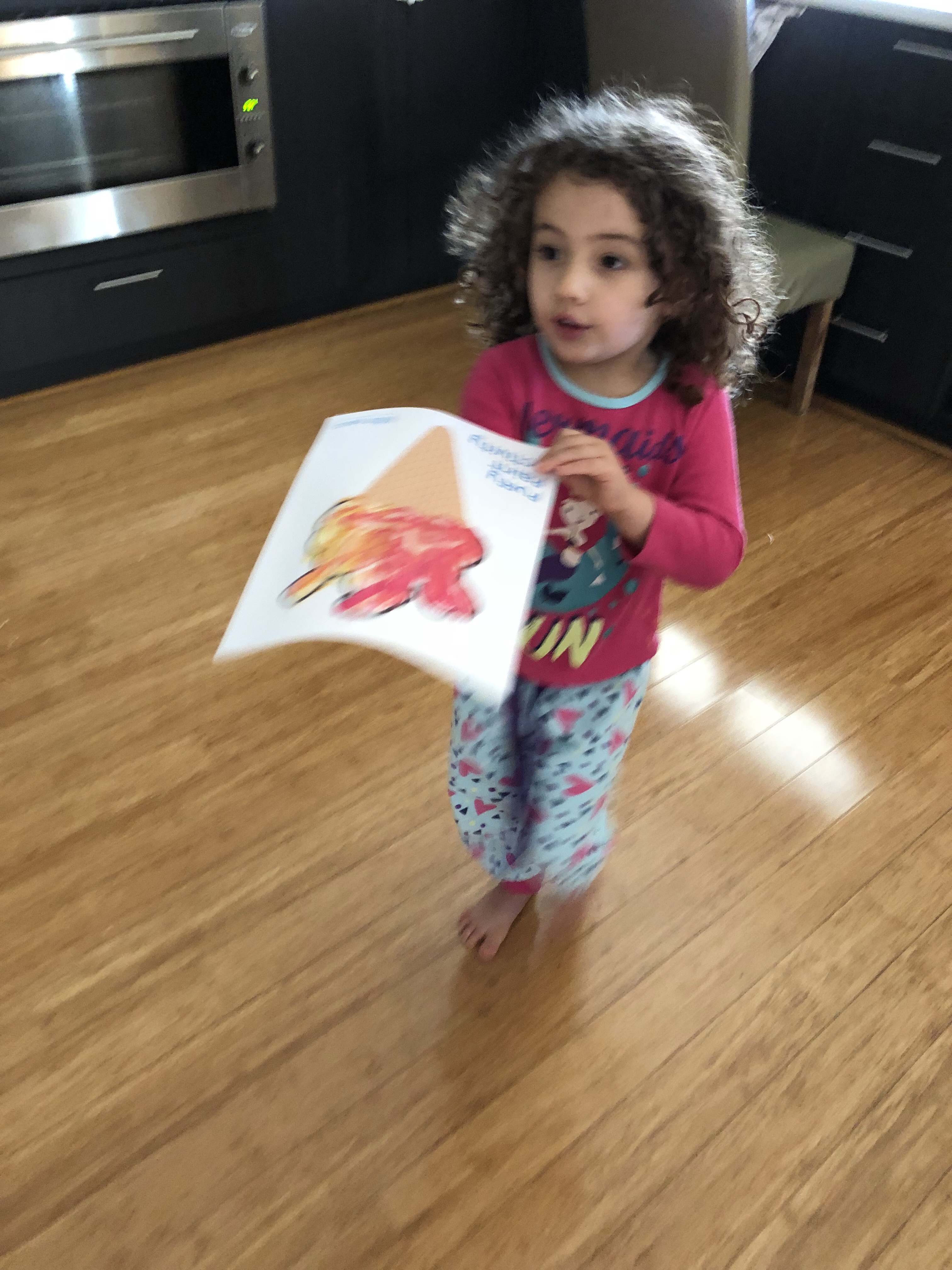
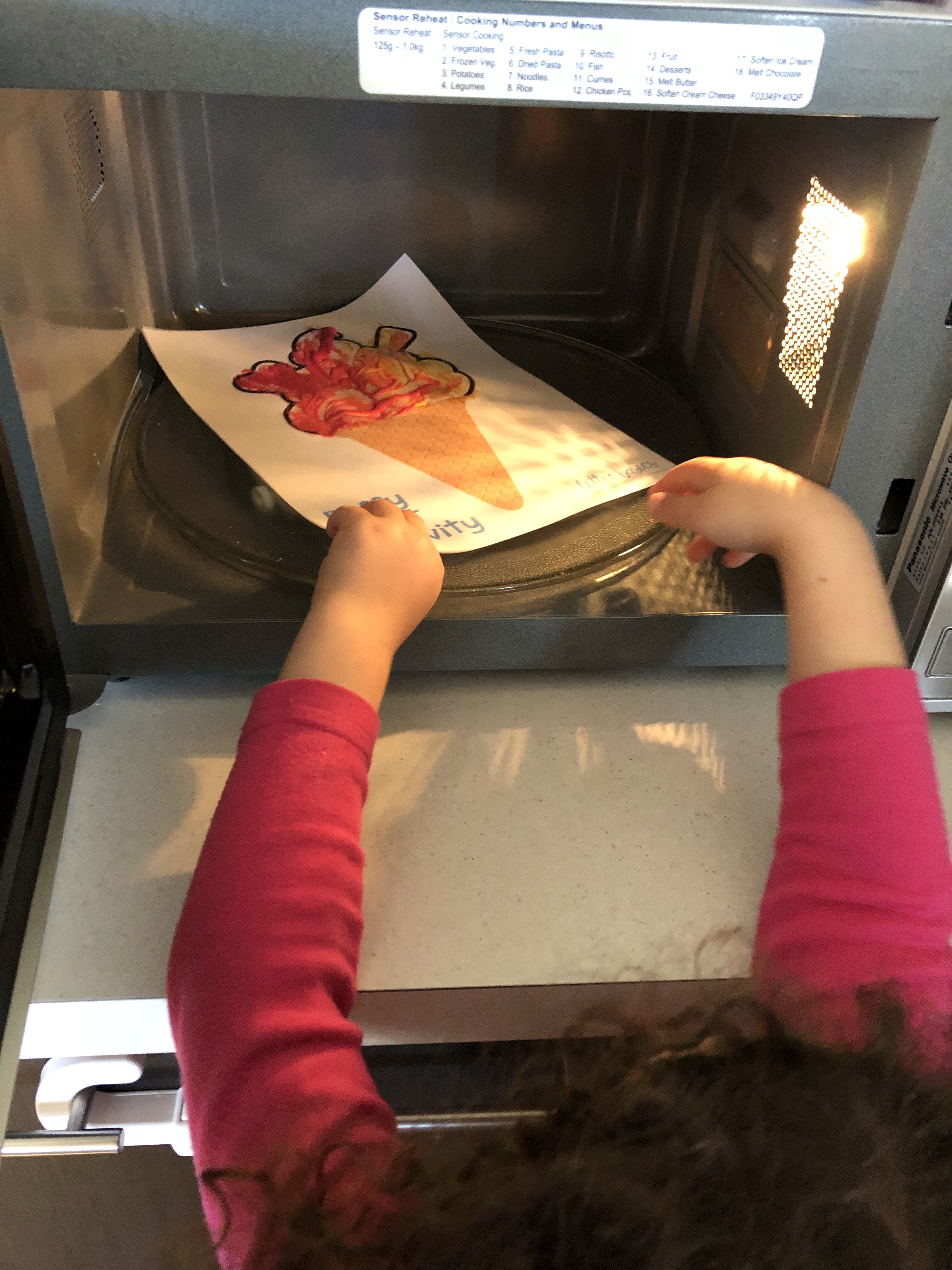

Cooking puff paint
To further add rise to the puff paint and set it, lay the page flat in your microwave and cook for approximately 20 seconds. The actual time will depends on the individual microwave. Start off with a shorter time as you can always pop the art work back in for longer if needed.
l swear that microwave hasn’t been watched so intently before!
Both Miss 4 and myself were glued to it for those gruelling twenty seconds!
Miss 4 was wondering what was going to happen and I was wondering if anything was going to happen at all!
With a loud ‘beep, beep, beep’ we spring the door open and gently lifted the page off the turntable.
Straight away the results were evident! The paint had risen and firmed up. As we laid the page onto the bench, my first instinct was to give it a poke – child much?
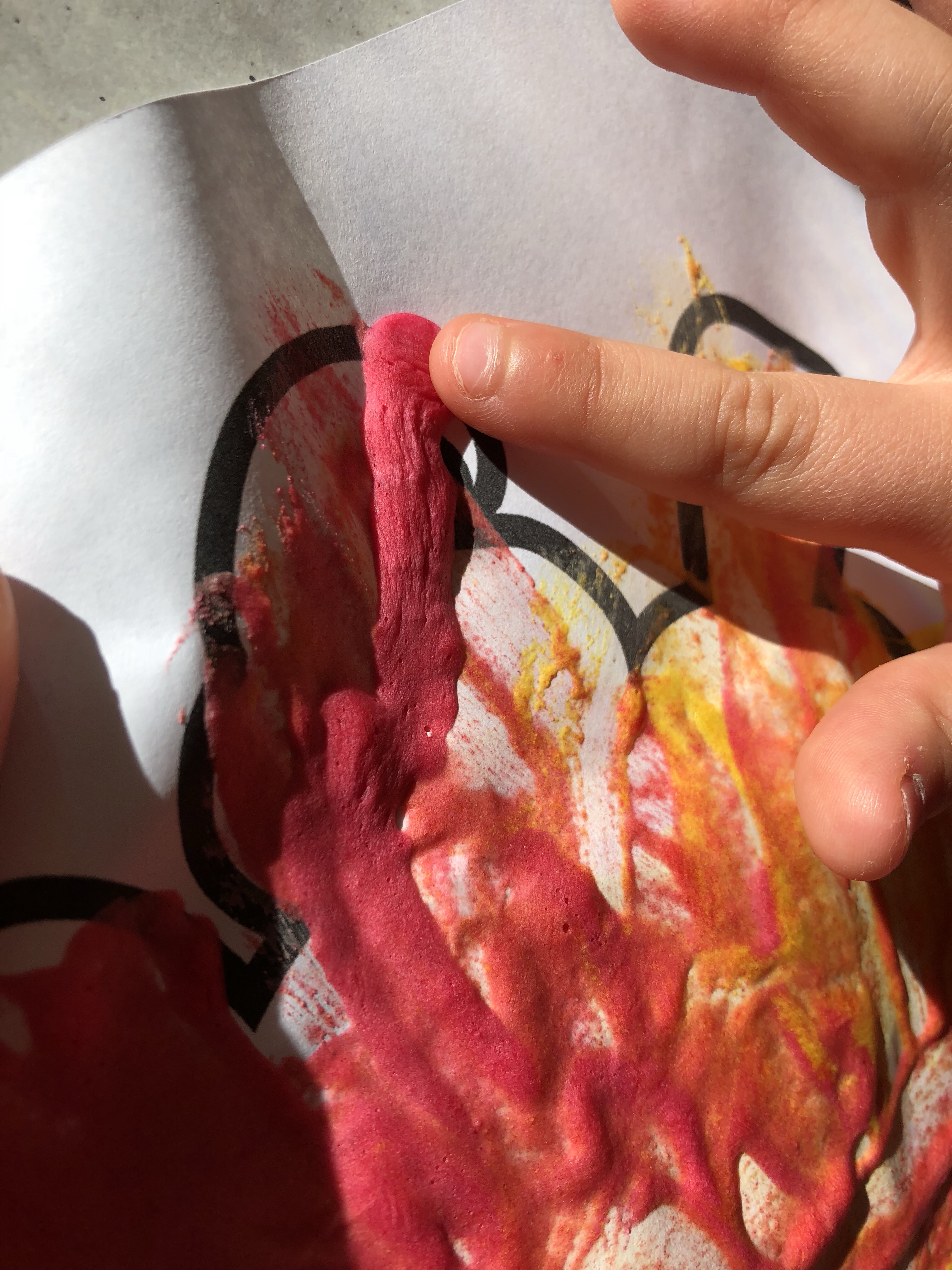

The puffed paint was slightly spongey with a little resistance. Miss 4 took it upon herself to attempt to squish all the thicker puffs. She ran her fingers over the paint which sparked a new path for our Puff Paint Activity.
Before I could say anything her hands were covered in the paint. This child will put her hands into anything!

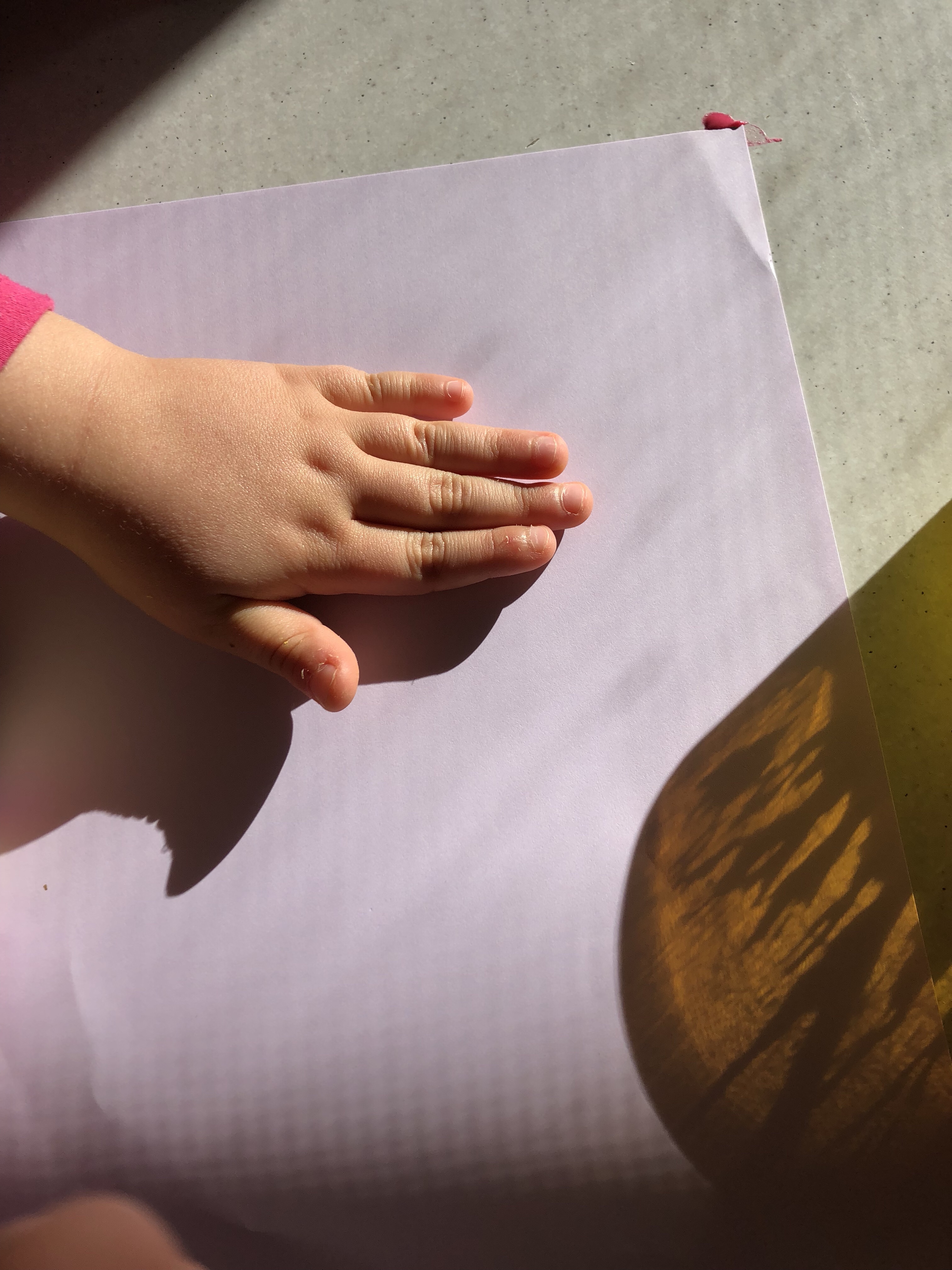


So just like that, our Puff Paint turned into Puffy Finger Paint. Miss 4 loved the way the paint felt on her hands and spent a lot of time running her fingers through its silky texture.
This spontaneous activity was a great success! I’m sure it will work it’s way back as a regular undertaking at our place.
Dani D x










0 Comments